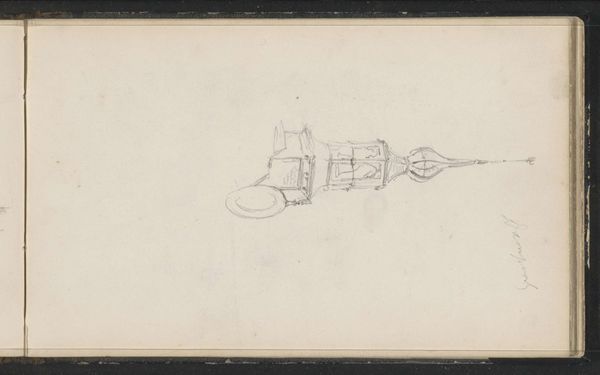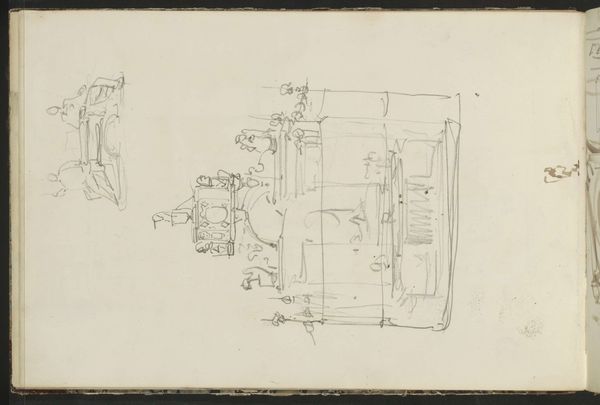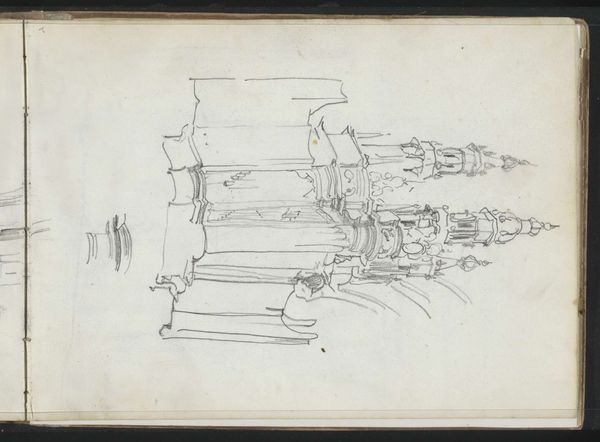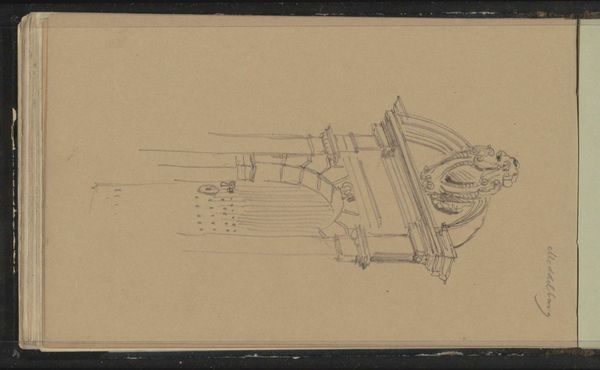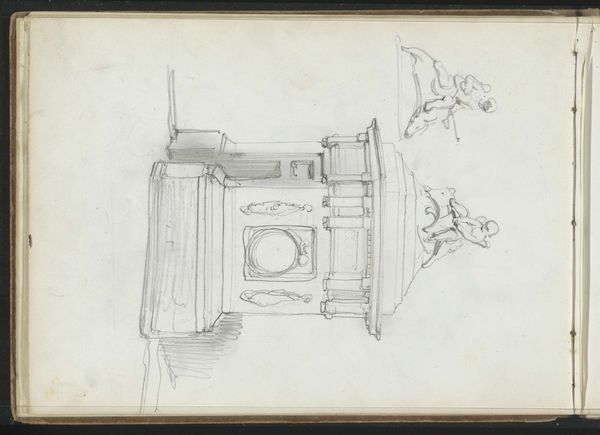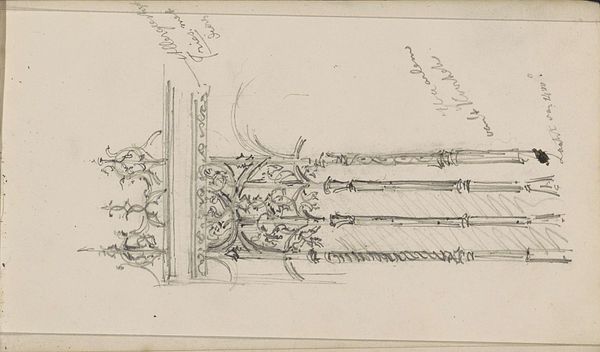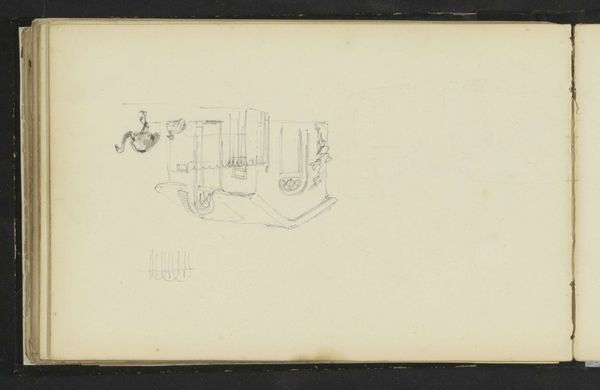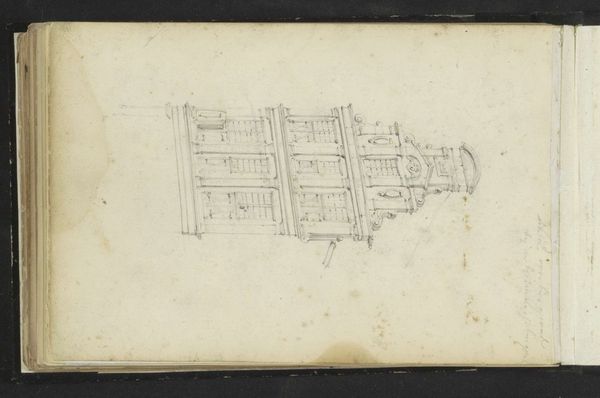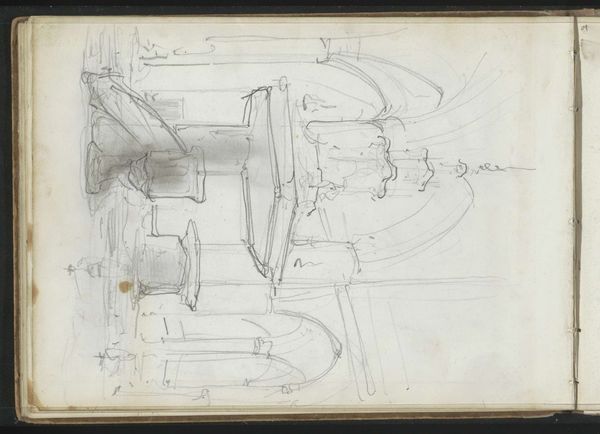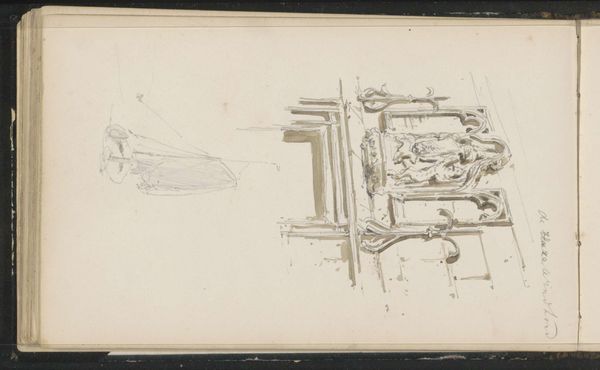
drawing, pencil
#
drawing
#
dutch-golden-age
#
geometric
#
pencil
#
cityscape
#
realism
Copyright: Rijks Museum: Open Domain
Editor: Here we have Cornelis Springer's pencil drawing, "Pomp te Utrecht," dating back to sometime between 1856 and 1861. It’s currently housed in the Rijksmuseum. What immediately strikes me is the artist’s use of light and shadow. The monument appears to almost float on the page because it is a very loose sketch. What's your take? Curator: It's a playful peek into the artistic process, isn't it? A kind of "warts and all" moment. To me, it feels almost dreamlike. Springer's known for his architectural paintings, which are generally so precise. And here, we find him just… thinking through form. It's like catching a glimpse into the architect's mind of Utrecht, imagining new civic sculptures. It really opens our eyes to their inspiration! Editor: So, it’s less about the final product and more about the journey of creation? Curator: Exactly! Consider how much we, as viewers, usually fixate on perfect representations. Yet, this invites us into the initial, exploratory phase. You know, that dance between possibility and intention that all creatives engage in. And I wonder, what are those geometric elements suggesting? Are they part of a larger vision? Perhaps a touch of the Dutch Golden Age shining through his vision of a then modern Netherlands, informing his very realism with imagination? Editor: That's such a wonderful point; seeing the layers of influence is really fascinating! I appreciate how a seemingly simple sketch can reveal so much about an artist’s thinking and their cultural environment. Curator: Indeed! It's a good reminder to embrace the beauty of the incomplete and the value of the process itself. It becomes less about grand, fixed structures and more about possibilities yet to come.
Comments
No comments
Be the first to comment and join the conversation on the ultimate creative platform.
